To Run or Not to Run? Dr. Sara's Report Card: Running Earns …
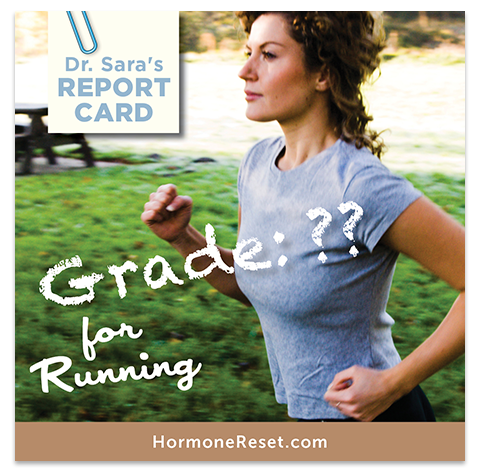
Oh, the love-hate relationship with running. On the one hand, you get to exercise outdoors, up close with the trees or on the beach while burning calories and increasing cardiovascular fitness, unless you’re confined to a treadmill in your garage or gym. Running is efficient, which became increasingly important to me when I had kids. On the other hand, running is uncomfortable. If it’s not a bad case of the wiggly jigglies under your oversized shirt, it’s the aching knee or the burning shin splints that has you agonizing through each step. Maybe your hip flexors or psoas is super tight on one side, and pull you out of alignment (Hello, Stan, Massage Man?). If you have ever been in superb running shape—when running feels effortless—then you know the euphoria that comes from a great run. However, the extreme difficulty of mastering the proper form of running, especially for women, may mean that running too often represents discomfort and dread, excessively high cortisol, and almost guaranteed injury.
In this blog, I will review running for women—the many risks and benefits that running can provide—as well as guidelines for creating an injury-free running experience.

If you are curious about running or getting back into running, you should consider a few of these things.

Women run for many reasons. Some women set a goal to achieve a milestone such as a marathon or triathlon or to be a part of a community. Others run to clear their mind, general health, and weight loss. Still others, especially moms like me, run for sanity. Running is a no-frills and effective way to get and stay fit. Yet running comes with some caution. As a high-impact sport, running can be hard on the joints and connective tissue and may accelerate the aging process. Many people have poor form, which can lead to (or may be a result of) muscle imbalances and/or injuries. Furthermore, brisk walking, hiking, barre fitness, and cycling can be just as efficacious for cardiovascular benefit but are kinder on your joints.
Still, running is one of the world’s most accessible and popular sports. It can be done anywhere and everywhere, and with very little equipment, which means it’s inexpensive too. Benefits of running include improved cardiovascular capacity (a stronger heart), increased metabolism (fat loss), reduced bad cholesterol (healthier heart), strengthening of the bones, as well as improved self esteem and overall health. 1 Office of Disease Prevention and Health Promotion, Chapter 2: “Physical Activity Has Many Health Benefits”, Physical Activity Guidelines, … Continue reading It’s also a great way to visit with friends (I run with my friend Jo every Sunday, and we have a T-shirt that reads “Running with a friend is cheaper than therapy”), get your dog some exercise, plus explore different cities and trails.
Since 2004, running participation increased 70% with women aged 25 to 34 years leading the group. Traditional (5Ks and marathons) and non-traditional running events have exploded, particularly those where obstacle courses and lots of mud are involved. Running apparel sales have climbed steadily as well. Rich Harshbarger, CEO of Running USA, states “running in America is thriving.” 2 “2014 State of The Sport-Part II: Running Industry Report”, Running USA, last modified June 15, 2014, … Continue reading
The Movement of Running
Running involves a complicated series of interdependent movements using the entire body from head to toe. While I used to think that my task was to lace up my running shoes and head out the door, a closer analysis shows that you want to pay close attention to your form. It’s not as simple as throwing one foot in front of the other, at least not if you’re female and want to prevent injury and strain.
-

Figure 1. Check out my heel strike! Don’t do this!
Foot strike plays a critical role in setting the “tone” for the flow of movement, or lack thereof, through the kinetic chain. Where and how you place your feet determines the biomechanics of the ankle, knee, hip and so on and can determine if and which kinds of injuries you may incur. 3Daoud, A., et al. “Foot strike and injury rates in endurance runners: a retrospective study.” Medicine and Science in Sports and … Continue reading Before I knew any better, I had a nasty heel strike when running, which would send a jarring shock from the heel to the knee to the hip, and slows my forward momentum. Check out my lousy heel strike in the photo in Figure 1, evidence of my poor form before I knew better!
- Thigh muscles and gluteals. While your feet are the busy bees, the larger body muscles of the hamstrings, quadraceops, and gluteals are the engine that propels the body forward through space (and burning lots of calories along the way). Sometimes there are imbalances in either strength or flexibility (or both) in your muscle groups.
- The arms are relaxed but purposeful while the core muscles stabilize the entire unit. As a result of this multifaceted movement, running recruits a large muscle load, which gets your heart rate and metabolism going.
We’ve all heard that running is good for your heart. In fact, habitual physical activity such as running can prevent the development of coronary artery disease (CAD) and reduces the risk of other chronic diseases, including osteoporosis, obesity, depression, and cancer of the breast and colon. Regular physical activity is defined by The American College of Sports Medicine and Centers for Disease Control and Prevention as getting 30 minutes or more of moderate-intensity physical activity on most (preferably all) days of the week. 4Thompson, P.D., et al. “Exercise and physical activity in the prevention and treatment of atherosclerotic cardiovascular disease a statement … Continue reading Regular exercise such as running increases Brain Derived Neurotrophic Factor (BDNF), which regulates the development and plasticity of the central nervous system, although the benefit may be lower in women compared with men. 5Szuhany, K.L., et al. “A meta-analytic review of the effects of exercise on brain-derived neurotrophic factor.” Journal of Psychiatric … Continue reading
I mentioned that running is efficient. Did you know that a 160-pound woman running one hour at 5 miles per hour burns 600 calories? If she runs faster (8 mph), she will burn 861 calories an hour. That’s a lot of calories! 6 “How Much Am I Burning? Mayo Clinic, last modified November 15, 2014, … Continue reading
While calories aren’t the whole story when it comes to health and weight loss, they are important to consider. I don’t like the “chronic cortisol” rise of longer runs with a steady and fast pace, and prefer interval training for the sprint/recovery phases, which build better stress resilience.
Variety is another benefit of running. You can run in the woods, on the beach, through cities or on a treadmill; the landscape of running is endless. If you like competitive events, you can sign up for the more serious marathons and 5k or get down and dirty with a good Tough Mudder. Running opens up a world of healthy, fun, interesting fitness community and near endless possibilities for all genders and ages.
Running Injuries
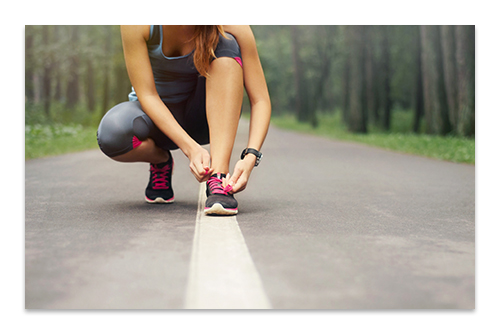 Since perfect form is tough to master, there are a lot of injuries and discomfort associated with running. Some of the most common injury caused by running include patellofemoral pain syndrome (runner’s knee), ilio-tibial band syndrome (ITBS), achilles tendinitis (often genetics put you at greater risk), plantar fasciitis (pain along bottom of foot), and shin splints. 7 Taunton, J.E., et al “A retrospective case-control analysis of 2002 running injuries.” British Journal of Sports Medicine 36, no. 2 … Continue reading Each year, 37 to 56 percent of people injure themselves because of running. The most common injuries occur in the lower extremity such as the ankle or knee, with the knee being the most common. Women are twice as likely to have ilio-tibial band syndrome compared with men. 8Foch, E., et al. “Associations between iliotibial band injury status and running biomechanics in women.” Gait & Posture 41, no. 2 … Continue reading At least half of these injuries are due to overuse and constant repetition of the same movement. These injuries reoccur 30 to 90 percent of the time and often need medical consultation and/or treatment. 9 Van Mechelen, W.. “Running injuries. A Review of The Epidemiological Literature ” Sports Medicine 14, no. 5 (1992): 320-335.
Since perfect form is tough to master, there are a lot of injuries and discomfort associated with running. Some of the most common injury caused by running include patellofemoral pain syndrome (runner’s knee), ilio-tibial band syndrome (ITBS), achilles tendinitis (often genetics put you at greater risk), plantar fasciitis (pain along bottom of foot), and shin splints. 7 Taunton, J.E., et al “A retrospective case-control analysis of 2002 running injuries.” British Journal of Sports Medicine 36, no. 2 … Continue reading Each year, 37 to 56 percent of people injure themselves because of running. The most common injuries occur in the lower extremity such as the ankle or knee, with the knee being the most common. Women are twice as likely to have ilio-tibial band syndrome compared with men. 8Foch, E., et al. “Associations between iliotibial band injury status and running biomechanics in women.” Gait & Posture 41, no. 2 … Continue reading At least half of these injuries are due to overuse and constant repetition of the same movement. These injuries reoccur 30 to 90 percent of the time and often need medical consultation and/or treatment. 9 Van Mechelen, W.. “Running injuries. A Review of The Epidemiological Literature ” Sports Medicine 14, no. 5 (1992): 320-335.
I used to think that women were at greater risk for running injuries compared men, probably related to joint kinematics, muscle loading, and bone density differences. Now, I understand that’s not the case, according to recent meta-analyses. 10Saragiotto, B.T., et al. “What are the main risk factors for running-related injuries?.” Sports Medicine 44, no. 8 (2014): 1153-1163; … Continue reading A more nuanced view is that certain risk factors put women at greater risk of running injury, including:
- previous sports injury
- running on concrete
- marathon training and participation
- weekly running distance of 30-39 miles
- wearing running shoes for 4 to 6 months
Women have a wider pelvis compared with men, which creates biomechanical differences in the kinetic chain. I was taught that this has a cost in terms of locomotion for women versus men, but this notion has been disputed. 11 Warrener, A.G., et al. “A Wider Pelvis Does Not Increase Locomotor Cost in Humans, with Implications for the Evolution of … Continue reading Overall, female runners demonstrate greater hip adduction, hip internal rotation, and knee abduction than men which can lead to more strain on the knee joint and surrounding connective tissues. Women use their gluteus medius whereas men utilize their gluteus maximus more with running. Women showed a progressive increase in activity of the gluteus medius with speed, which can cause fatigue and subsequent biomechanical adjustments to compensate for the fatigue. In fact, women have worse running economy compared with men, and lesser aerobic profile. 12 Daniels, J., et al. “Running economy of elite male and elite female runners.” Medicine and Science in Sports and Exercise 24, no. 4 … Continue reading—and that means we may tire more easily and lose proper form. Finally, women have smaller, less dense bones than men, which can lead to more strains and fractures. 13 Chumanov, E.S., et al. “Gender differences in walking and running on level and inclined surfaces.”Clinical Biomechanics 23, no. 10 … Continue reading
Improper running form is the major reason why many people get injured while running. Biomechanical imbalances, compromised range of motion in the joints, and muscle weakness causes gait modifications, which disrupts the flow of the kinetic chain, and can lead to injury. 14 Dugan, S.A., et al. “Biomechanics and analysis of running gait.” Physical Medicine and Rehabilitation Clinics of North America 16, … Continue reading
As I mentioned earlier, proper running gait and foot strike is critical to absorb the impact of your body’s weight hitting the ground. Improper foot strike may put excessive force on the other joints, muscles, and connective tissues. 15 Gallo, R.A., et al. “Common Leg Injuries of Long-Distance Runners Anatomical and Biomechanical Approach.” Sports Health: A … Continue reading If left unchecked, these imbalances become repetitive movement patterns, which can eventually lead to overuse and injury.
Don’t Lose Hope! Here’s Help
If you are curious about running or getting back into running, there are some things you should consider. First, as with any exercise program, it is important to check that you are ready to exercise. It might be worthwhile to take the Physical Activity Readiness Questionnaire (PAR-Q), which contains a series of questions assessing your readiness for exercise. 16 National Academy of Sports Medicine, Physical Activity Readiness Questionnaire (PAR-Q), accessed on April 29, … Continue reading
If you answered yes to one or more of the questions, it’s best to check with your primary care clinician and let them know you would like to begin a running program.
Form 101
As I mentioned earlier, repetition, improper form and subsequent biomechanical compensations are main factors that can lead to running injuries. Of course, if you’re like me, you probably missed the “memo’ on proper running form. How hard can it be? One foot in front of the other, right? Not quite. You see, none of us are perfectly symmetrical so we start of with imbalances that, without awareness and correction, become unhealthy movement patterns. To add to this, we sprain, strain and break things along the way, which we probably didn’t rehabilitate sufficiently. The body adapts to injuries by compensating, which leads to dysfunctional movement. 17 Comerford, M.J., et al. “Functional stability re-training: principles and strategies for managing mechanical dysfunction.” Manual … Continue reading
What constitutes proper running form? Good question. As usual, there is not a one-size-fits-all answer. Even so, there are some basic things that you should be aware of.
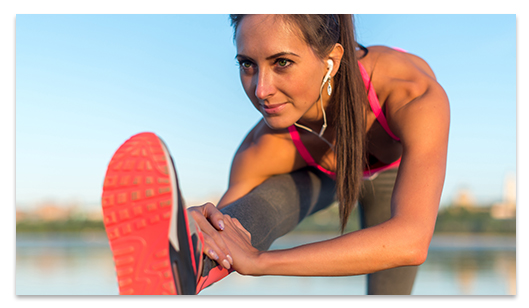 Make sure you are warmed up. You can walk, jog slowly, jump, march in place, or do calisthenics for 5 to 10 minutes. Get your hips, knees, ankles, and shoulders to move through their full range of motion to warm up for running.
Make sure you are warmed up. You can walk, jog slowly, jump, march in place, or do calisthenics for 5 to 10 minutes. Get your hips, knees, ankles, and shoulders to move through their full range of motion to warm up for running.
- Before you start, check in with your posture and core. Make sure your posture is upright, but not too tense. Your core muscles are engaged and your focus is ahead. Keep your arms relaxed and elbow at a 90-degree angle.
- Run with your feet under you rather than out in front of you to avoid over striding. Maintain a consistent cadence throughout your run with equal effort coming from both your upper and lower body. Take care not to force a toe-strike or heel strike. Aim for a mid-foot strike but be mindful of the nuance. Here’s Danny Dreyer’s video on the topic: https://www.youtube.com/watch?v=rkUqkdPQHis
- Balance strength with flexibility. If you’ve been reading my work for a while, you know how much I believe in balance when it comes to your hormones, your nervous system, and your life. Now let’s talk about your leg muscles, particularly your hamstrings (hammies for short). My husband, a recovering tackle football player, likes to stretch his hamstrings, one leg at a time over a park bench with his spine rounded over the leg. From Jill Dailey at The Dailey Method, I learned that in order to create flexibility in your hamstrings, you want to stretch over the hamstrings in two modes: one with spine extended, and one with spine flexed (rounded). She adds that the quadriceps must be stretched with both a bent and a straight leg. From barre class, I’ve also learned the importance of lengthening my iliotibial band for knee stability.
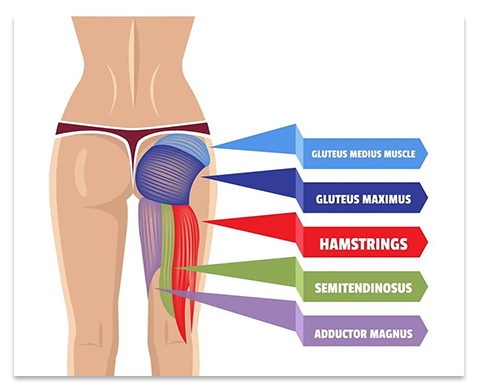
Figure 2: Gluteus medius and surrounding muscles
- Don’t let your butt sag (i.e., focus on gluteus medius). Your gluteus is the biggest muscle in the body, but in women, the gluteus medius (side of the rear, see photo) is often weak. Some of this is aging, some is from sitting too much, and some of this is neglect. The clinical term for it is “gluteal atrophy,” but you probably know it better as “saggy butt.” I’ve heard trainers harp on the gluteus medius for years, and never really paid attention until I started having knee, low back, and hip pain from running. Now I’m a zealot for the toned glut med. Not only will it give you “dancer’s dent,” it will improve your running. Here’s why: Your gluteus medius stabilizes the hip during single leg movement, and the athletes with the best developed glutes are gymnasts and ballerinas. This is another plug for integrating barre movement into your cross training if you want to run with proper form, or some form of single leg activity to develop your gluteus medius.
- Roll out your IT band, hamstrings, quads, and glutes after the run. As I’ve mentioned, women are twice as likely to have ilio-tibial band syndrome. When you have ITBS, you are more likely to lean their trunk more towards the stance limb which may be associated with decreased iliotibial band flexibility. 18 Foch, E., et al. “Associations between iliotibial band injury status and running biomechanics in women.” Gait & Posture 41, no. 2 … Continue reading Lengthen your IT band in barre class or on a roller. While you’re at it, roll out your tight hammies, quads, and glutes after the run. It doesn’t improve muscle strength, but it’s proven to help your range of motion. 19 Sullivan, K.M., et al. “Roller‐massager application to the hamstrings increases sit-and-reach range of motion within five to ten seconds … Continue reading
If you’re a fan, take your training up a notch by watching the best “how to” videos on running form. 20 I like these Youtube trainers: Danny Dreyer of Chi Living https://www.youtube.com/watch?v=rkUqkdPQHis Running Wild … Continue reading
Purchase some sessions with a running coach to upgrade your technique. Make sure to invest in some quality sports shoes and clothing. Talk to your local sports store and ask them about running gear. Have your gait analyzed before buying running shoes. Exercise in comfortable weather; too hot or too cold can be unhealthy. Finally, common sense is to make sure you are hydrated.
Easing into It
If you’re not ready to run yet, walk first. You can build up to running and in fact, this is advisable beginners and people who have not maintained a regular running or exercise program. You can start off around your neighborhood then branch out up hills and trails. You can add some intervals as you get stronger by increasing your walking pace on alternating blocks or every 5 minutes for a minute. There is a wealth of information on the internet about transitioning from walking to running. Explore different options to see what works best for you.
Final Grade: B-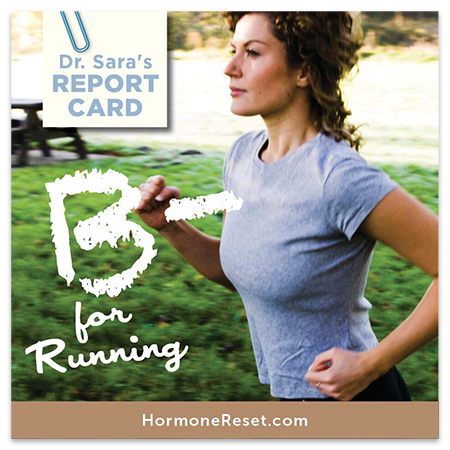
Owing to the difficulty of running with proper form, I give running a grade of B- for women. I see too many women running with poor form, tight hips, or some compensatory movement dysfunction. One of the best ways to include safely running in your fitness regimen is to crosstrain, whereby you include other forms of fitness that address the key problems with form, such as a weak gluteus medius or tight ilio-tibial band. Improve your grade with running by crosstraining in a barre class, or studying Danny Dreyer’s method of ChiRunning. I’ll be writing about ChiRunning and ChiWalking in a future blog, as I’ve been working out with one of Danny’s certified trainers, which has improved my form, boosted my energy, and prevented injury.
Sign up to receive notification when next Report Card goes live

References
| ↑1 | Office of Disease Prevention and Health Promotion, Chapter 2: “Physical Activity Has Many Health Benefits”, Physical Activity Guidelines, accessed 4/29/2015, http://www.health.gov/paguidelines/guidelines/chapter2.aspx |
|---|---|
| ↑2 | “2014 State of The Sport-Part II: Running Industry Report”, Running USA, last modified June 15, 2014, http://www.runningusa.org/2014-running-industry-report?returnTo=annual-reports |
| ↑3 | Daoud, A., et al. “Foot strike and injury rates in endurance runners: a retrospective study.” Medicine and Science in Sports and Exercise 44, no. 7 (2012): 1325-34. |
| ↑4 | Thompson, P.D., et al. “Exercise and physical activity in the prevention and treatment of atherosclerotic cardiovascular disease a statement from the Council on Clinical Cardiology (Subcommittee on Exercise, Rehabilitation, and Prevention) and the Council on Nutrition, Physical Activity, and Metabolism (Subcommittee on Physical Activity).” Circulation 107, no. 24 (2003): 3109-3116. |
| ↑5 | Szuhany, K.L., et al. “A meta-analytic review of the effects of exercise on brain-derived neurotrophic factor.” Journal of Psychiatric Research 60 (2015): 56-64; Jiménez-Maldonado, A., et al. “Chronic Exercise Increases Plasma Brain-Derived Neurotrophic Factor Levels, Pancreatic Islet Size, and Insulin Tolerance in a TrkB-Dependent Manner.” PloS One 9, no. 12 (2014): e115177; Knaepen, K., et al. “Neuroplasticity—Exercise-Induced Response of Peripheral Brain-Derived Neurotrophic Factor.” Sports Medicine 40, no. 9 (2010): 765-801. |
| ↑6 | “How Much Am I Burning? Mayo Clinic, last modified November 15, 2014, http://www.mayoclinic.org/healthy-lifestyle/weight-loss/in-depth/exercise/art-20050999?pg=2 |
| ↑7 | Taunton, J.E., et al “A retrospective case-control analysis of 2002 running injuries.” British Journal of Sports Medicine 36, no. 2 (2002): 95-101. |
| ↑8 | Foch, E., et al. “Associations between iliotibial band injury status and running biomechanics in women.” Gait & Posture 41, no. 2 (2015): 706-710. |
| ↑9 | Van Mechelen, W.. “Running injuries. A Review of The Epidemiological Literature ” Sports Medicine 14, no. 5 (1992): 320-335. |
| ↑10 | Saragiotto, B.T., et al. “What are the main risk factors for running-related injuries?.” Sports Medicine 44, no. 8 (2014): 1153-1163; Van der Worp, M. P., et al. “Injuries in runners; a systematic review on risk factors and sex differences.” PloS One 10, no. 2 (2015): e0114937. |
| ↑11 | Warrener, A.G., et al. “A Wider Pelvis Does Not Increase Locomotor Cost in Humans, with Implications for the Evolution of Childbirth.” PloS One 10, no. 3 (2015): e0118903. |
| ↑12 | Daniels, J., et al. “Running economy of elite male and elite female runners.” Medicine and Science in Sports and Exercise 24, no. 4 (1992): 483-489. |
| ↑13 | Chumanov, E.S., et al. “Gender differences in walking and running on level and inclined surfaces.”Clinical Biomechanics 23, no. 10 (2008): 1260-1268. |
| ↑14 | Dugan, S.A., et al. “Biomechanics and analysis of running gait.” Physical Medicine and Rehabilitation Clinics of North America 16, no. 3 (2005): 603-621. |
| ↑15 | Gallo, R.A., et al. “Common Leg Injuries of Long-Distance Runners Anatomical and Biomechanical Approach.” Sports Health: A Multidisciplinary Approach 4, no. 6 (2012): 485-495. |
| ↑16 | National Academy of Sports Medicine, Physical Activity Readiness Questionnaire (PAR-Q), accessed on April 29, 2015, http://www.nasm.org/docs/pdf/nasm_par-q-%28pdf-21k%29.pdf |
| ↑17 | Comerford, M.J., et al. “Functional stability re-training: principles and strategies for managing mechanical dysfunction.” Manual Therapy 6, no. 1 (2001): 3-14. |
| ↑18 | Foch, E., et al. “Associations between iliotibial band injury status and running biomechanics in women.” Gait & Posture 41, no. 2 (2015): 706-710. |
| ↑19 | Sullivan, K.M., et al. “Roller‐massager application to the hamstrings increases sit-and-reach range of motion within five to ten seconds without performance impairments.: International Journal of Sports Physical Therapy 8, no. 3 (2013): 228. |
| ↑20 | I like these Youtube trainers: Danny Dreyer of Chi Living https://www.youtube.com/watch?v=rkUqkdPQHis Running Wild https://youtu.be/–YU8YcWeUU Devon Trent https://www.youtube.com/watch?v=_J-7beA-daw |
